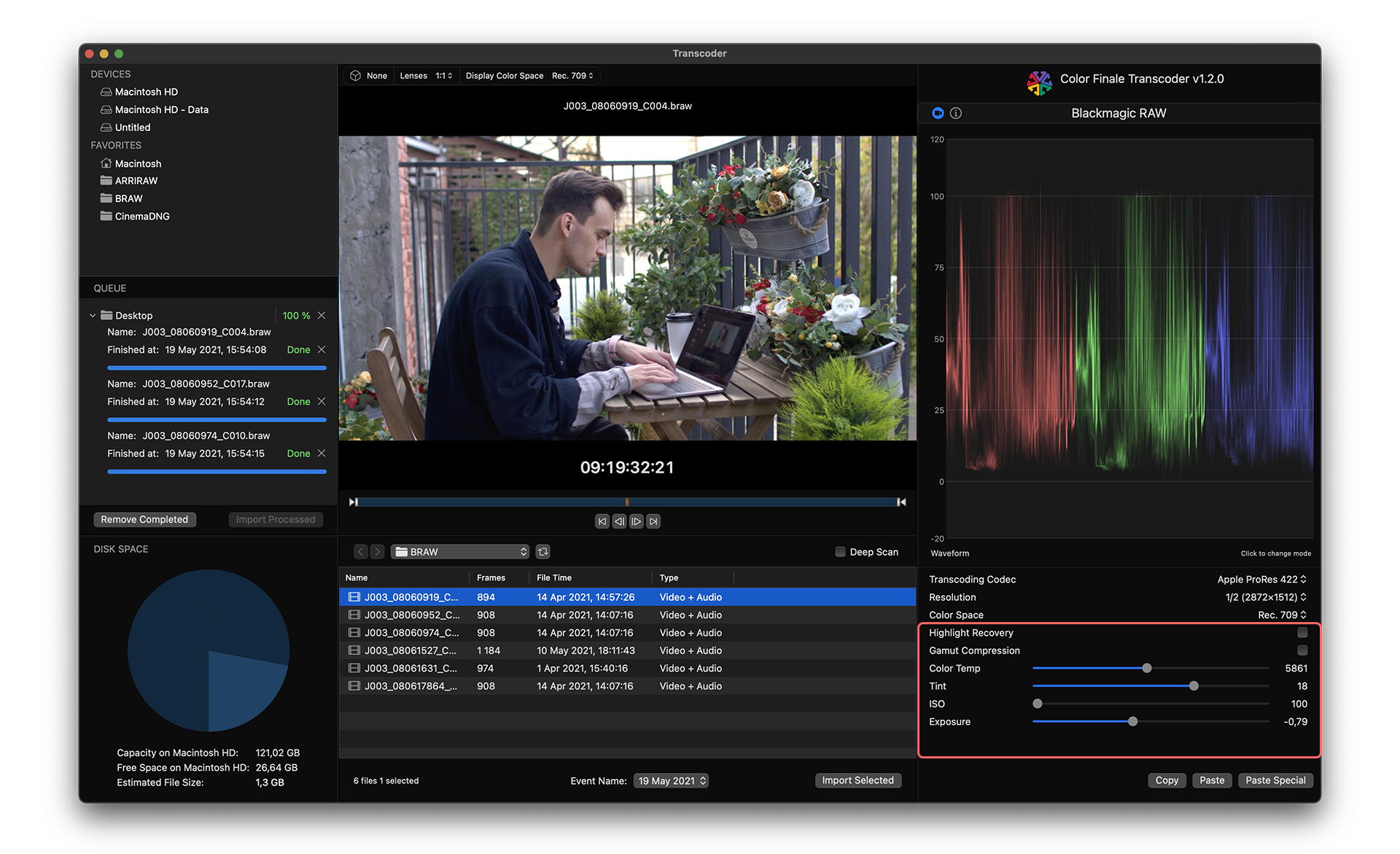Exposure, color, and more parameters

The remaining raw parameters are determined by each camera raw codec manufacturer and will differ from one format to another. The parameters that can be adjusted are based on the SDK provided to outside developers, including Color Trix. Common controls will include ISO, color temperature (color balance), and color tint.
ISO is an industry standard representing the sensitivity of the sensor to light. It’s the digital equivalent of how film stocks are rated according to their sensitivity to light. Both are based on a logarithmic scale. The increase of ISO 800 to ISO 1600 (in-camera or in post) results in a doubling of the brightness. Since the ISO value represents the sensor’s optimal sensitivity for light reception, increasing ISO is equivalent to ‘pushing’ a film stock during lab processing. As with film, increasing the ISO value will impact the noise of the image. In other words, increasing the ISO will make an image brighter, but with increased noise.
Color temperature will shift the color balance of the image. The numerical values represent degrees on the Kelvin scale. Moving a color temperature slider to the left reduces the Kelvin value and will shift colors towards blue, resulting in a ‘cooler’ image. Moving the slider to the right increases the Kelvin value and shifts colors in the opposite direction towards yellow. Thus the image is said to be ‘warmer’.
Color tint changes the balance along the magenta/green axis. Whether the direction of the slider to the left or the right shifts the tint green/magenta or magenta/green will differ among the three supported raw codec controls.
Feedback
Was this page helpful?
Glad to hear it!
Sorry to hear that.